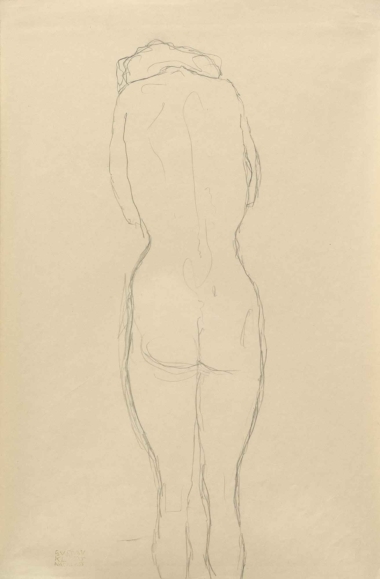Gustav KLIMT was born in Baumgarten in 1862. From 1876 to 1883, he attended the School of Arts and Crafts. In 1880, together with his brother Ernst and fellow student Franz Matsch, he founded the “Künstlercompagnie”, which took on decorative commissions. Inspired by French Impressionist painting, Symbolism, the art of the Pre-Raphaelites and German Art Nouveau, Klimt developed a specifically Austrian form of Art Nouveau. In 1897, he founded a new artists’ association. The group called itself the “Secession”. Klimt was elected its first president. Klimt began painting portraits even before the turn of the century. Initially still naturalistic in style, he dispensed with spatial depictions in his later portraits and thus also became a pioneer of abstract art. The two-dimensional depiction also became characteristic of his landscape paintings. Gustav Klimt died in Vienna in 1918. 1934 — first participation in an exhibition, 1935 — first solo exhibition at Galerie Welz.
Gustav KLIMT was born in Baumgarten in 1862. From 1876 to 1883, he attended the School of Arts and Crafts. In 1880, together with his brother Ernst and fellow student Franz Matsch, he founded the “Künstlercompagnie”, which took on decorative commissions. Inspired by French Impressionist painting, Symbolism, the art of the Pre-Raphaelites and German Art Nouveau, Klimt developed a specifically Austrian form of Art Nouveau. In 1897, he founded a new artists’ association. The group called itself the “Secession”. Klimt was elected its first president. Klimt began painting portraits even before the turn of the century. Initially still naturalistic in style, he dispensed with spatial depictions in his later portraits and thus also became a pioneer of abstract art. The two-dimensional depiction also became characteristic of his landscape paintings. Gustav Klimt died in Vienna in 1918. 1934 — first participation in an exhibition, 1935 — first solo exhibition at Galerie Welz.




Recent Comments